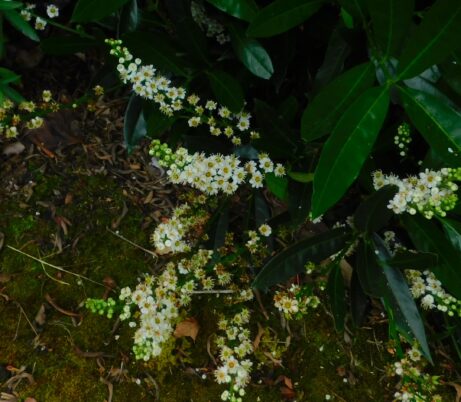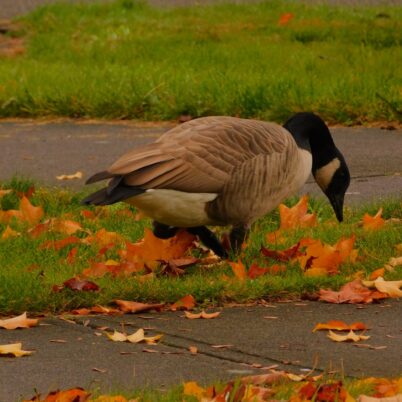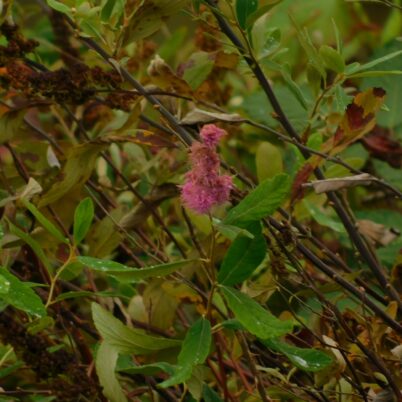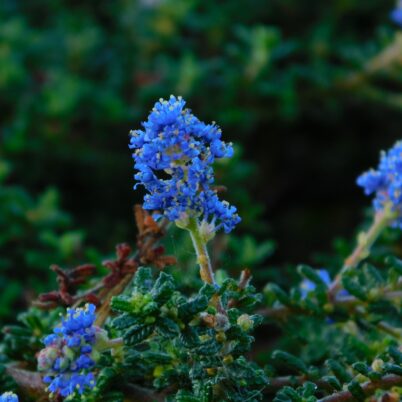Late Bloomers on Campus

Remontant Season
By Marcia Wilson
What does it mean when the plants aren’t behaving as expected? Columbine is blooming behind Building 24 on the Lakewood Campus. Red Clover speckles pink pom-poms against the ground. Yarrow, Queen Anne’s Lace, Roses, Spirea, and poppies are acting like summer has returned for a few more weeks. What’s happening?
It is called remontant flowering. Remontant is from a French word meaning “to rise again”.
Late bloomers?
Firstly, South Puget Sound is a natural Fire Ecological niche. In short, wildfires, volcanoes, and storms hit the regions hard, affecting the plants as much as the animals. Before the settlers, the Indigenous were practicing controlled burnings twice a year, once before summer and a second time just before the winter rains. Ultimately, the floral kingdom has gained much experience in surviving quick changes.
Remontant, return!
Secondly, the environment is a vast, ever-changing place and few plants keep to a fixed schedule. If unseasonably warm weather arrives after the season begins to cool off, it sparks a “reset” in the floral clocks and a brief re-flowering is the result. This is advantageous to plants who may have had a poor year of producing flowers or fruit the first time. Flower-eating animals and pollinators certainly benefit from the brief resurgence of food.
To quote Horace, “You can drive out Nature with a pitchfork, but she keeps on coming back.”
A second look at a second look

Some bits of handed down folklore in North America are negative, such as, “plants that bloom twice are evil”. On closer examination, the superstition comes from the same areas that hold that the number two is unlucky. In agricultural societies it can be difficult to “give and take” with nature’s flexibility; crops and markets are set to tight schedules! This negativity contradicts the older traditions of winter blooms as signs of hope and resilience, such as described in Jean Toomer’s haunting poem, November Cotton Flower.
The bad, the good and the odd
Longer bloom times are how invasive species like the Cherry Laurel (pictured) and the Himalayan blackberry are a problem. On the other hand, they provide food for wildlife. This Cackling goose, a rare visitor to Western Washington, is helping his larger cousins look for juicy bugs and dandelion blooms by the Rotunda.

Tree trimming time
When humans want remontant on their own terms, it’s called forcing. Forcing artificially re-creates the conditions that would cause a new blooming. A well-known example is the winter poinsetta. Another method takes advantage of pruning season.
Pruning season for many plants begins in late fall to early winter, when fruit trees go dormant. Dormant is an Old French word for “to sleep”. When a tree is properly dormant the life-giving sap withdraws, the wood dries, and no leaves can grow. It looks dead, but spring proves its life when warm weather stimulates the return of sap, leaf, and blossom.
The Cherry Tree Carol
There is an old belief (dating as far as 9th Century Syriac literature) that the unborn Christ Child called the cherry trees to bend their fruit-laden branches down to his mother because she was having pregnancy cravings for fresh fruit. The song, The Cherry Tree Carol, was once a beloved Mystery Play but is now an obscure, often forgotten piece of music. Its singers are still associated with the large bouquets of blooming cherries put on display from mid-December to early January. In Czech and Slovakian communities, the cutting starts on Dec. 4, an important day for its patron saint.

Local markets in South Puget Sound will soon be selling cold weather bouquets of cherry, forsythia, and pussywillow blossoms. None of these trees naturally bloom in the heart of winter, but if pruned branches are kept sheltered in water they will bloom in about two weeks’ time: A symbol of warmer times, hope, and the reminder that even the long, dark weeks of winter only seem endless. Eventually, spring will return. To quote the Guinean Proverb, “No matter how long the winter, spring is sure to follow.”
Ending on a high (medical) note
Another winter forceling is the Amaryllis, a symbolic hope for Huntington’s Disease, as,
“…The shape of the flower represents the head and upper torso, signifying how Huntington’s disease affects mental and physical functions. The growing flower also represents hope and celebrates the achievements that have been made in Huntington’s disease treatment and research.”

In closing, a poignant haiku by the poet Kobayashi Issa (1276-1828) who penned a delicate tribute to the human relationship with winter blooms:
正月や 村の小すみの 梅の花
Shogatsu ya
Mura no kosumi no
Ume no hana
It’s New Years.
At the corner of the village,
Ume blossoms.